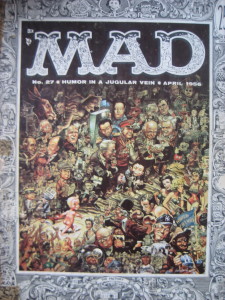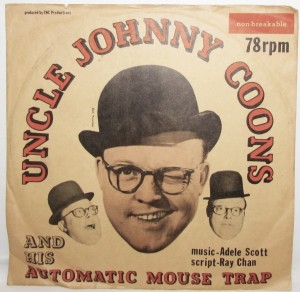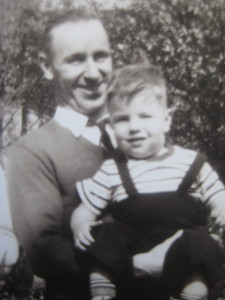If the Russians ever wanted to surprise attack us during the 1950’s, it would be at 10:30am on a Tuesday morning. That’s when the air raid sirens went off.
I grew up in an era of fear of nuclear annihilation. Those sirens went off like clockwork every week and they were loud and lasted several minutes. Folks knew if they heard them any other time, it would not be a practice test. One evening, in 1959, the sirens went off and had all of Chicago saying their prayers.
It was a different world in 1959, a distrusting world, a world of Joe McCarthy and communists living next door or under your bed. It was a time when the air raid sirens went off every Tuesday morning at 10:30. Short blasts meant you had time to take cover and prepare. A long steady blast meant hit the dirt. In school we would practice the duck-and-cover routines, hiding under a desk or crouched along a corridor wall covering our eyes with our hands. People built bomb shelters underground or in their basement, food and water were stored away as each day could be your last.
Even as kids, we kinda realized that hiding under a desk or in a hallway would not help too much, but that is what they told us to do on television, even on the kiddie shows. Duck and Cover was a popular song at the time and they even had a cartoon. And every Tuesday morning we were reminded of the cataclysmic possibilities.
Some will say it was the over enthusiastic fire commissioner, Robert Quinn, who ordered the sirens to howl, but many thought that “Da Boss,” Richard J Daley, had to have been at least aware, if not approving the order himself.
It was Tuesday night, September 22nd, as my family was getting ready for bed. Dad was not much of a sports fan when it came to the Chicago White Sox, so he would wait until tomorrow to find out who won the pennant. Instead, we watched Red Skelton and Garry Moore shows. Suddenly, without any warning, the night air was filled with the horrific long blasts of the air raid sirens screeching imminent doom.
As they wailed their message of attack, mom and my sisters began to throw mattresses down the basement stairs, grandma came down from the attic apartment with a few things wrapped in her arms while I followed my dad out the front door into the street (to watch the big blast, I guess).
I don’t remember anyone turning to the emergency station on the radio. Some neighbors were outside their homes and in the street looking southward toward the Loop trying to get a glimpse of the missiles that would blow us all to Kingdom-come. A few people were shouting and wailing along with the sirens. One neighbor lady was kneeling and praying, some were just silent. Suddenly Mr. M ran out of his house with beer in hand shouting, “Sox won! Sox won!”
Everyone looked at each other with collective realization.
It was all over in a matter of minutes, the sirens died down; people drifted back into their homes as prayers changed to curses. Dad was upset, calling for someone in City Hall to get fired but mom calmly said we should all be thankful that it wasn’t real and say a prayer before we go to sleep (and after we pull the mattresses from out of the basement!). Grandma went back upstairs vowing the next time, “I ain’t coming down!”
The population of Chicago would be talking about that evening for weeks to follow. In school we would relate our story of what happened in each house when the sirens blared. Eventually, as the stories were related, and the fear of the evening was long gone, it became somewhat humorous the night we all thought we were dead meat.
The sound of the sirens still send a tinge of fear through my body in an auto-response of the days of duck-and-cover. It’s a siren you hope you never hear and should never, ever, be used for celebration.
It is the sound of death and destruction, not a victory celebration in any sense of the word.


